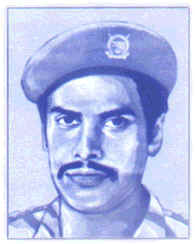 Pandithar
(photo
courtesy
www.tamilmaravan.com
)
Pandithar
(photo
courtesy
www.tamilmaravan.com
)by T. Sabaratnam
(Volume 2)
-----------------------------------------------------------------------------------------------------------
Dear Editor,
This is my personal experience with Lalith Athulathmudali regarding the Jaffna violence in reference to the ongoing articles by Mr. Sabaratnam. It was 1986 and I was the vice-president of the Government Medical Officer's Association (GMOA). Dr. Stanmore de Alwis was the President and Dr. Ratnapriya the Secretary.
There were instances of the army shelling the Jaffna Hospital from the Fort army camp. When the GMOA protested about the shelling, Lalith stated that the LTTE was shelling from the hospital premises at the Fort camp and, hence, they had no choise other than returning the fire.
Drs. Alwis and Ratnapriya undertook a visit to Jaffna to see for themselves what was happening. They found that there was no truth whatsoever to Lalith's claim. Both the doctors were very fair-minded gentlemen.
On their return the two of them and I met Lalith at his ministry to work out a no hostility zone around Jaffna Hospital. When we confronted Lalith with his claim about the LTTE using the hospital premises for shelling, based on our first hand knowledge, he slowly twisted his version. He then claimed that the LTTE was shelling from the direction of the Jaffna Hospital and not from the hospital premises.
This is how the southern politics have been handling the ethnic issues throughout. God only knows when this scenario will change leading to the birth of peace and prosperity in Sri Lanka.
Dr. K. Nadesan, Malaysia
---------------------------------------------------------------------------------------------------------
Chavakachcheri Attack
1984, I have already pointed out, is the turning point in the Tamil freedom struggle. In the last chapter, I delineated the events that completed the process of alienation of Sri Lankan Tamils from the Sri Lankan State. Jayewardene’s passion for destroying opposition, Sinhala and Tamil, and his vindictiveness and Lalith Athulathmudali’s actions based on Israeli advice - retaliatory attacks on civilians and the establishment of militarized Sinhala border villages - pushed the Tamil people behind the militants, particularly the LTTE.
In this chapter, I will take the story to the next step - the beginning of the process of acquisition of territory and the building up of the basic infrastructure for a separate state by the LTTE. In the next chapter, I will detail the military and administrative structure the LTTE put in place. That chapter will show the genius of Pirapaharan, how he outpaced the other four militant groups – the People’s Liberation Organization of Tamil Eelam (PLOTE), the Eelam People’s Revolutionary Liberation Front (EPRLF), the Tamil Eelam Liberation Organization (TELO) and the Eelam Revolutionary Organization of Students (EROS) - and emerged as the main - and after 1987 the sole - player.
The story thereafter will be the story of Pirapaharan and the LTTE. The other groups will figure as ineffective marginal factions, some of them in later years as tools of the Sinhala state. The Tamil people, a vast majority of them, have placed their faith and trust in Pirapaharan and the LTTE.
That is the position even today. Tamil people are solidly behind Pirapaharan and the LTTE. I will also add that an attempt to use Karuna and others to defeat Pirapaharan has proved counterproductive. It has strengthened Pirapaharan. He had emerged as the symbol of Tamil unity. The Tamil people firmly feel that an attempt to defeat Pirapaharan is an attempt to deny them their rights. They strongly feel that their self-respect, dignity and honour depend on the military might of Pirapaharan.
The war was brought to Colombo on 22 October by EROS at the instigation of RAW. The series of bomb explosions delivered a rude shock to Jayewardene and Athulathmudali. They appealed to the Sinhalese to keep calm. They were reduced to that plight because they had lost the weapon of mob violence to subdue the Tamils.
Jayewardene got moral backing from US Secretary of State Richard Murphy, who visited Colombo on 27 October. Murphy told the media that the ethnic conflict needs a political solution and that it should be "solved by the Sri Lankan government and not by outsiders."
Tamils mourned the assassination of Indira Gandhi, killed on 31 October, 1984. Pirapaharan and other militant leaders issued condolence messages. Pirapaharan called her "Annai Indira" meaning Mother Indira. Indira Gandhi’s eldest son, Rajiv Gandhi, succeeded her as the new Prime Minister on 1 November 1984.
The LTTE did not relent the landmine war, however. On the very night Rajiv Gandhi took oaths as the Prime Minister of India, the LTTE blew up an armoured vehicle on the Atchchuveli - Vasavilan Road killing nine soldiers and injuring three. The next night, 2 November, it blew up another armoured vehicle on the Thondamanaru - Palaly Road, killing six soldiers. Both explosions took place close to the Palaly army camp as the army night patrol ventured out into the rural interior. The army had by then made it a practice to travel in a convoy of armoured vehicles, for safety and to instill awe among the public.
Colombo declared 3 November, the day Indira Gandhi was cremated, a national day of mourning. The Tigers kept quiet on that day and the next. They resumed the landmine war thereafter. On 9 November, they exploded another landmine. Soldiers opened fire in the Jaffna main market killing three men; Israeli-prompted collective punishment!
 Pandithar
(photo
courtesy
www.tamilmaravan.com
)
Pandithar
(photo
courtesy
www.tamilmaravan.com
)
The Tigers struck a big blow on 19 November when they blew the jeep in which Colonel A. Ariyaperuma and seven soldiers travelled. Ariyaperuma was a clever officer handpicked by the Defence Ministry and posted at Point Pedro, then the hive of LTTE activity. He was given the specific task of rooting out the LTTE. The LTTE, in return, decided to eliminate him.
Pirapaharan instructed Pandithar, then the LTTE’s northern commander, to conduct the attack. Pandithar and his deputy Kittu laid a trap for Ariyaperuma. They blasted a culvert in the Kadduwan - Tellipalai road and laid a landmine trap near Tellipalai junction. As Pandithar anticipated, Ariyaperuma went to the scene to inspect the damaged culvert and was blown up.
Ariyaperuma went in a convoy of three vehicles, a jeep followed by two armoured cars. He led the convoy in the jeep. The Tigers blasted the jeep killing eight soldiers including Ariyaperuma. His death was a great blow to the army. He was posthumously promoted to the rank of Brigadier.
The army conducted a cordon and search operation at Tellipalai and neighbouring areas from 3 a.m. on 20 November. The combing operation was on when TELO struck, inflicting the bloodiest blow since the commencement of the Tamil freedom struggle.
Around 2.30 in the afternoon a 14-year-old boy went to the well-guarded two-storey Chavakachcheri Police Station. He told the sentry at the iron gate that he had lost his identity card and wanted to make a police entry to enable him to obtain a duplicate. He said he was sitting his GCE Ordinary Level examination and his need was urgent. The policeman opened the gate, always kept closed as a security measure, to allow the boy in. Exactly at that time Newton, whose real name was Nicholas, jumped with a blazing gun from an improvised armoured vehicle that braked in front of the gate.
Newton, who was from Colombuthurai and an old boy of St. Patrick’s College, dashed into the police station followed by a group of about ten attackers. Another group of about 20 men who followed the attackers branched into the different wings of the building. They were all in army-type uniforms. One group ran to the armoury and removed the weapons. Another went upstairs and smashed the communication equipment and shot the policemen hiding in the dormitory. They also threw hand grenades. The stunned policemen, trained by Israelis, ran away in disarray. Three men then drove in a hijacked Sri Lanka Electricity Board lorry loaded with explosives. They parked it in the compound and wired it to the van in which they had come. Someone then blew a whistle and the attackers withdrew. A massive explosion followed. The heavu concrete hoods and the cement-block walls collapsed.
Schoolchildren, in blue shorts and white shirts, swarmed the site. They scoured the heap of rubble for weapons. A Tamil police inspector who survived the attack with injuries described the scene as heart-rending. He said the enthusiasm displayed by the young students showed the extent to which the Tamil community had moved away from the state and the police, the State’s law-enforcement arm. "I realized that the Tamil people had been totally estranged," he told a Jaffna daily. Twenty-seven persons, 24 policemen and three civilians, died in the attack. Most of the other police officers were injured. The operation was sharp and swift. It was over in 15 minutes.
The army rushed a detachment from Jaffna. TELO ambushed it at Kaithadi. The militants exploded several landmines, fired at the soldiers from both sides of the Kandy Road and lobbed hand grenades and petrol bombs. About 20 soldiers died.
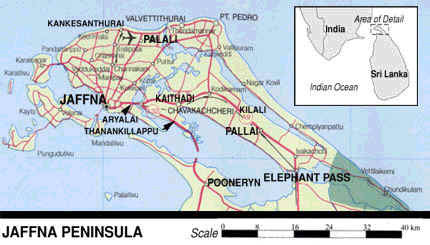
The ‘boys’ had demonstrated their capacity to take on the Israeli-trained police and the army. There was jubilation in the north and east and in Tamil Nadu. The entire Tamil press, in Sri Lanka and in Tamil Nadu, exhibited elation. The feeling that the Tamils had taught the Sinhala State a lesson was predominant.
TELO was particularly happy. At last, it had won the admiration of the Tamil people. The LTTE had grabbed public attention all this time. The LTTE was hitting the police and the army almost daily. They were constantly in the news. TELO leader Sri Sabaratnam wanted to do something big to draw public attention towards TELO. And he wanted to do better than the LTTE attack on the same police station two years before on 27 October 1982. Sri Sabaratnam had come over to Jaffna to plan the attack.
He arranged for the videoing of the attack. TELO showed the video in Tamil Nadu and to the expatriate Tamil community worldwide. It helped TELO to collect funds. But TELO could not sustain the momentum. It proved occasional feats do not make a revolution or constitute a freedom struggle. The LTTE kept up its steady battery of landmine attacks aimed at restricting the movement of the police and the army and acquiring territory.
Ordered to Leave Jaffna
In Batticaloa, on 23 November, following a tip-off, soldiers ambushed and killed five armed youths who landed on the beach from a boat. The soldiers seized 10 AK -47s and 3000 rounds of ammunition. A second boat got away.
State Minister Anandatissa de Alwis summoned a special media conference and announced that Tamil terrorists were preparing to invade Sri Lanka from Tamil Nadu and were preparing the ground to declare the establishment of an independent state of Tamil Eelam on Thai Pongal day, 15 January 1985. "We are prepared to go for war if such an attempt was made," de Alwis thundered.
India reacted with anger. It accused Sri Lanka of creating war psychosis. It said Sri Lanka was preparing the ground for a harsh military action against the Tamils.
Lalith Athulathmudali ridiculed the Indian accusation. "What are we going to gain by war?" he asked and added, "This government has a big majority and the next election is on 1989." The cleverly worded dig was at India. Rajiv Gandhi had called a parliamentary election and the campaign was on. In Tamil Nadu the Sri Lankan ethnic conflict emerged as a major election issue.
Athulathmudali then carefully prepared the ground to implement the string of stringent actions he had worked out with Israeli advice. He called upon the militants to give up their ‘mad and fruitless’ armed attacks on the security forces and surrender. He promised amnesty.
The militant groups rejected the call. The LTTE sent Athulathmudali a letter informing him of their rejection. The letter, written in Tamil, was released to the media. The Sinhala and English language press ignored it. Jaffna papers carried it. Following is the translation:
Dear Mr. Lalith Athulathmudali,
You are conducting a racial war against innocent Tamil people. In that, you have beaten even the notorious Hitler.
You are heaping on your head the guilt and sin for making the Tamil race shed blood and tears. The crimes you commit are unparalled in history.
You call our struggle ‘terrorism’. Our struggle is nothing but an armed resistance of an oppressed people. Armed struggle currently on in Tamil Eelam is the child of your state terrorism. You are responsible for its birth.
You cannot suppress it through military action. The problem is not going to end by calling us terrorists.
Your attempt at a military solution will only bring destruction to you.
You will not be able to identify or destroy us. We are everywhere. To be more specific We are the People.
History has taught the lesson that even powerful states cannot withstand the might of the people. No state had succeeded in suppressing the Will of the People.
We are determined to achieve our objective of Tamil Eelam. We are prepared to face whatever the difficulties and make the sacrifices necessary to achieve our target.
It is you who will stand convicted for your crimes before the Conscience of the People of the World.
Athulathmudali reacted harshly. He said he was forced to safeguard the integrity and sovereignty of Sri Lanka by taking measures to counter the threat of invasion the terrorist groups are going to mount from Tamil Nadu. He announced two sets of emergency measures. The first set of measures was to prevent the use of the sea by the militant groups. The second set of measures was an answer to the LTTE’s claim that 'We are the People.'
Athulathmudali told Parliament on 29 November that the coast from Mannar to Mullaitivu would be a no-go area and fishing and sea travel in that area had been banned. Then he announced severe restrictions on land travel in the Jaffna peninsula. He banned the plying of all private vehicles - buses, cars, motorcycles, trucks, lorries, tractors and bicycles. Only state buses were permitted to operate and that too for nly two hours a day.
The Saturday Review, an English language weekly published in Jaffna, wrote: What will those deadly terrorists do next? Take to tricycles? Will tricycles be banned too eventually? …Banning bicycles because some ‘terrorists’ use them is like banning sex because some people take to adultery."
Athulathmudali concluded his announcement in parliament with an appeal to the residents of the Jaffna peninsula to leave Jaffna. He told Jaffna Tamils to take a holiday with friends and relatives elsewhere in the country so that the government would know for sure who was with the terrorists and who was not. I was one of those who received this announcement with shock and disbelief. I called Athulathmudali next morning at 5.30, the time he answered calls from his journalist contacts, and protested. I asked him what I should do with my father, sister and her family, mother-in-law, sister-in-law and her family and other close relatives. He said he had been inundated with protests. "Write a suitable story saying that the government will rethink its position if the people of Jaffna come out and denounce the terrorists," he said. He asked me not to attribute the story to him.
The LTTE’s attack on Dollar and Kent farms on the night of 30 November and the attacks on the fishing villages of Kokkilai and Nayaru on 1 December shifted the government’s and people’s focus to the Mullaitivu district. I have given a detailed account of these attacks in Chapter 23. These massacres of about 120 Sinhala civilians were followed by retaliatory massacres of Tamil civilians and the cleansing of the area of Tamils. I gave details about the forced eviction of the farming families of Amarawayal and Thennamarawadi.
Retaliatory massacres of Tamil civilians continued during December. Twenty Tamil youths detained in the Vavuniya army camp on suspicion of being connected to militant groups were taken out on 1 December and shot. The Defence Ministry claimed that they were shot when they tried to escape from army custody. The army also killed 12 Tamil youths who lived near Dollar and Kent Farms.
On the same night (1 December) 30 to 40 soldiers from the Padaviya army camp went to Othiyamalai, an ancient Tamil village in Nedunkerni in the Mullaitivu district. They spent the night at Malaikadu Kovil. They entered the village at the break of dawn and cordoned off the area. They searched the houses and arrested youths of the age group of 15 to 35 years. Witnesses have submitted affidavits to Amnesty International saying that the youths were assaulted in the presence of their families. Their hands were tied behind their backs and taken, some of them in the trailer of the tractor 25 Sri 6511, to the village community centre hall.
The soldiers also took five elderly men, of about 60 years. The youth, 27 in all, were questioned and severely assaulted. The youths were then lined up and shot. Their bodies were taken in the tractor outside the village and burnt. The five elderly men were taken away in the tractor. Their half-burnt bodies were found later near the Dollar Farm. Two of them had been identified from the unburnt parts of the clothes they wore. The names, occupation and the number of dependents of the butchered villagers are given in the Amnesty International report.
The LTTE was not subdued by these killings. On December 4 it exploded a landmine in Padaviya, killing a soldier. The other soldiers shot dead at least 90 Tamils, men, women and children, old and young.
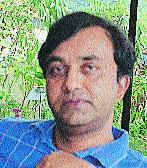 Gamini
Dissanayake,
who
was
lying
low
since
the
Maduru
Oya
mess-up,
saw
an
opening
to
stage
a
comeback.
He
told
the
villagers
of
Nivitigala
on
3
December
to
be
prepared
to
fight
to
safeguard
the
country’s
unitary
constitution.
He
said,
Gamini
Dissanayake,
who
was
lying
low
since
the
Maduru
Oya
mess-up,
saw
an
opening
to
stage
a
comeback.
He
told
the
villagers
of
Nivitigala
on
3
December
to
be
prepared
to
fight
to
safeguard
the
country’s
unitary
constitution.
He
said,
Every patriotic citizen should be in readiness to fight terrorism even with agricultural implements such as katties, mammoties and poles if ordered by the government. The lives and property of the people will be safe only if the unitary status is preserved in Sri Lanka.
Not to be outdone by Dissanayake, Athulathnudali ordered a massive crackdown on the militants. The government clamped a 42-hour curfew in the entire Northern Province on 8 December and mounted a massive search and arrest operation. The police and the armed services cordoned off villages and conducted house-to-house searches. Youths were taken to public places, questioned, arrested. Hundreds were arrested in Mullaitivu, Kilinochchi, Vavuniya, Mannar and Jaffna peninsula. Reports said over 3,000 youths were rounded up, 800 of them in the Jaffna peninsula. The Jaffna Citizens Committee said about ten youths were shot dead during the search.
Anti-Tamil feeling was whipped up in the in the Sinhala areas again. Two Tamil-owned shops were burnt in Ratnapura. Two more were torched in Hatton. Minor incidents of assault and intimidation were reported from many towns in the hill country.
Posters written in black and blue appeared in Trincomalee. One poster said, Those who demand Tamil Eelam are traitors. All traitors should be chased away from Trincomalee. The other poster said, If Sinhalese cannot work in Jaffna how can Tamils work in Trincomalee?
Ethnic cleansing of Tamils from the Weli Oya region and the cold-blooded massacre of Tamils continued. On 6 December, the army imposed a 24-hour curfew in the Tamil village of Thiriyayi. Through a loud hailer the army ordered all the 1399 families in that agriculturally prosperous village to assemble on the playground. The people were attacked when they obeyed the order. Over 100 severely injured persons were admitted to hospital. Similar incidents took place in several Tamil villages. In Periyakulam, about 20 youths were lined up and shot.
In December 1984 and January 1985 Tamils from the following villages were chased away: Kokkilai, Karunartukerni, Kokkudoduwai, Nayaru, Kent and Dollar farms, Andankulam, Kanukkerni, Untharayankulam, Udanga, Othiyamalai, Periyakulam, Tanduvan, Kumulamunai (East and West), Tanniyoottu, Mulliyavalai, Chemmalai, Thannimurippu and Alampil.
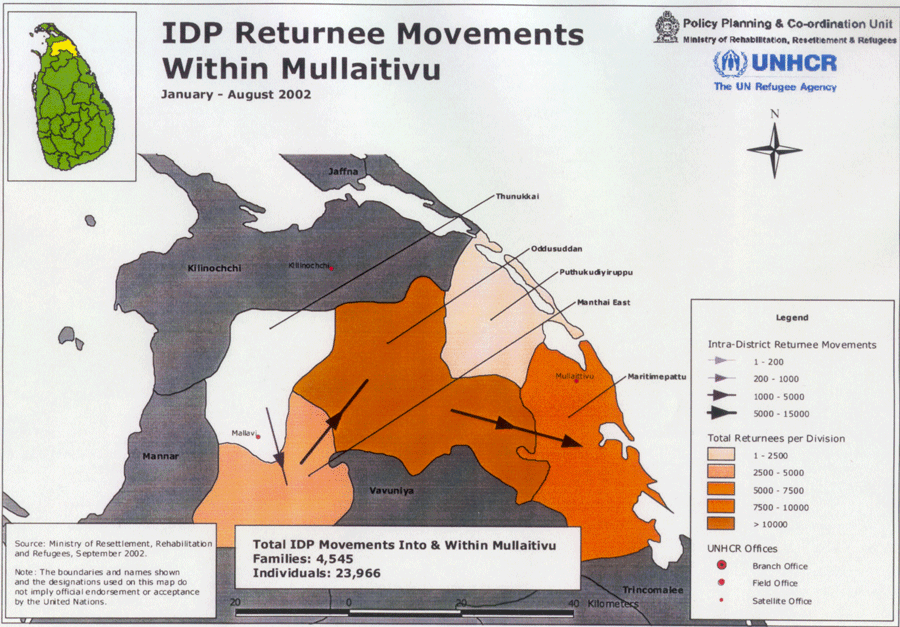
The government also kept up its pressure on the militants during the rest of December. The Defence Ministry announced on 12 December that it had arrested over 200 terrorists in Kaithadi, a village outside the Jaffna Municipal limits. The Jaffna Citizen’s Committee said the arrested persons were all students who were returning home from a private tutory after lectures.
The next day, 13 December, the shocking murder of Methodist priest Rev. George N. Jeyarajasingham took place. The car in which Rev. Jeyarajasingham travelled was stopped at a checkpoint near Murungan in the Mannar district by army personnel in civil. Later, Rev. Jeyarajasingham, his driver Abdul Cader Sulaiman and police constable Jesuthasan Roche attached to the Murunkan police station were found dead and partly burnt in the car in which they travelled.
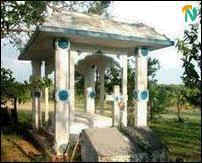 Memorial
for
Rev.
Jeyarajasingham
at
Jeevothayam
Farm
near
Mannar,
2003
Memorial
for
Rev.
Jeyarajasingham
at
Jeevothayam
Farm
near
Mannar,
2003
Five days later, 18 December, eight policemen and a civilian driver died when their jeep hit a landmine in Batticaloa. The next day, 19 December, two army officers and two soldiers died when an army jeep was blasted in a landmine explosion at Padaviya. The army retaliated by killing four Tamils. Two soldiers died in another landmine attack in Pulmoddai on the same day. The army, in retaliation, killed four Tamils.
Finding the crackdown of 8-10 December had failed to halt the landmine war, Athulathmudali ordered a fresh crackdown on 19 December. The combined police-security forces rounded up more than 1,000 young men in Jaffna. The government, realizing that the movements of the police and the army, were restricted announced its decision to use rockets, bombs and small-caliber artillery.
The war had escalated. The death toll climbed rapidly. Over 400 deaths were reported in the one month beginning the last week of November. The initiative, military officials privately acknowledged, has passed to the militants.
Ian Jack of the Sunday Times, London visited the army camps in Jaffna during this time. He reported in his article printed on 16 December 1984,
The army, frankly, is jittery… a force besieged in its own country behind sandbags and barbed wire.
Defence Fund
The army and the police were generally demoralized. To encourage them, Athulathmudali launched the "Help the Forces" campaign and announced the establishment of a National Defence Fund. In a statement, he urged the public to help generously to the army, navy and the airforce to "eradicate terrorism." Citizens were told to donate raincoats, water bottles, beds, buckets, crowbars, refrigerators, generators, aluminium ladders, electric switches, volleyball nets and sports goods.
Pirapaharan countered Athulathmudali’s National Defence Fund with his own defence fund. He named it the Tamil Eela National Defence Fund. Like Athulathmudali, he also issued an appeal to the people. The following is the translation of his appeal to the Tamil people,
We are currently facing the most difficult period in the political history of Tamil Eelam.
Repressive army rule had been thrust on our people. The government is trying to suppress the political demands and aspirations of the Tamil people by unleashing state violence.
Repression has never succeeded in any part of the world. Repression only sharpens the revolutionary spirit of the oppressed people. It really whets the desire for freedom. It awakens the spirit of freedom of the oppressed people.
The government is finding it difficult to withstand our armed onslaught. It is showing its anger on the civilians.
By such atrocities, the government hopes to set the Tamil people against the militants. We are aware of those strategies. It is not prudent to postpone the armed struggle because the army is attacking the people.
We must teach the government and the army that a freedom struggle cannot be suppressed by inflicting hardships on the Tamil people. We must also take steps to keep the army in constant fright and tension. We must keep the army within the confines of their camps.
We are not alone in this struggle. We enjoy the full backing of the entire people of Tamil Nadu. We also enjoy the sympathy of the Indian people. Yet we must realize that to break the shackles of oppression we ourselves must conduct the struggle.
We cannot win freedom without suffering. Freedom had never been won without sacrifice. If we are to live in safety, if we are to live as free people we must be prepared to make sacrifices.
Pirapaharan’s appeal won the heart of the Tamil people, in Sri Lanka and abroad. It won him funds.
My wife and I went to Jaffna to persuade our immediate family members to come and stay with us in Colombo. We were worried because our houses were within rocket range of the Navatkuli Military Camp. We discussed the matter first with my father and mother-in-law. My father declined to leave his home. He said, "Do you want us to run away leaving the boys? I will never do that. All of us have discussed the matter and have decided to be with them." My mother-in-law was more firm. She said, "The boys are fighting for us. We will be with them." They were in their early seventies.
My sister refused to leave Jaffna. My sister-in-law also took the same position. Their children were also equally firm.
I went round the paddy fields that separated our village from the Navatkuli Camp. I saw a string of bunkers. Militant groups had apportioned the area surrounding the military Camp and were maintaining constant guard. A militant told me, "We have encircled the camp. We have buried landmines, all round. Soldiers cannot come out."
I waited with them for a few hours. Helicopters brought the camp its supplies. The militant told me, "We have begun the process to confine the forces in Jaffna Fort within it."
We returned to Colombo convinced,
I visited Jaffna in the third week of December. I discussed my impressions with a few Sinhala journalist friends. Mervyn de Silva, who was formerly Chief Editor, Lake House, was one of them. He advised me, "Saba! Don’t talk about these things to anyone. No one is in a mood to listen. They are under the impression that they are winning militarily. That was the talk in Lake House and in Sinhala political circles. "We are getting weapons and training. We are going to win," was the general feeling.
With Indira Gandhi dead and novice Rajiv Gandhi unable to comprehend the complexities of the ethnic problem, ‘master strategist’ Jayewardene and his able lieutenant Athulathmudali decided to go for a military solution.
The cabinet decided on 26 December to abandon the All Party Conference. As I said in an earlier chapter, I covered the press conference in which Athulathmudali announced the cabinet decision. The core sentence with which I opened the lead story of 27 December 1984 still rings in my ears. Lalith Athulathmudali said;
Political solution will remain the government’s goal, but terrorism will be put down with a sterner hand.
The TULF leadership was shocked and pained. Amirthalingam was depressed when I met him to get his reaction. He knew the moderates had been pushed out of the political scene. He told me the Sinhala leadership had let them down very badly. He told me with a heavy heart that they had lost face with the Tamil people.
The response to Athulathmudali’s warning of dealing with terrorism with a sterner hand came from the LTTE. In Chennai its spokesman, Anton Balasingham, said,
The government seems hell-bent on a military solution, and if that is what they want, they will get a military answer. Our campaign will intensify until the government realizes it cannot defeat us militarily.
Balasingham was so confident because he was perhaps the only person party to the foundation Pirapaharan had laid in 1984 to build a strong military and a separate state - Tamil Eelam. The structure he built on that strong foundation is currently running a de facto parallel state in nearly 75 percent of the northeastern province.
Next
Chapter 26: Laying the Foundation for Tamil Eelam